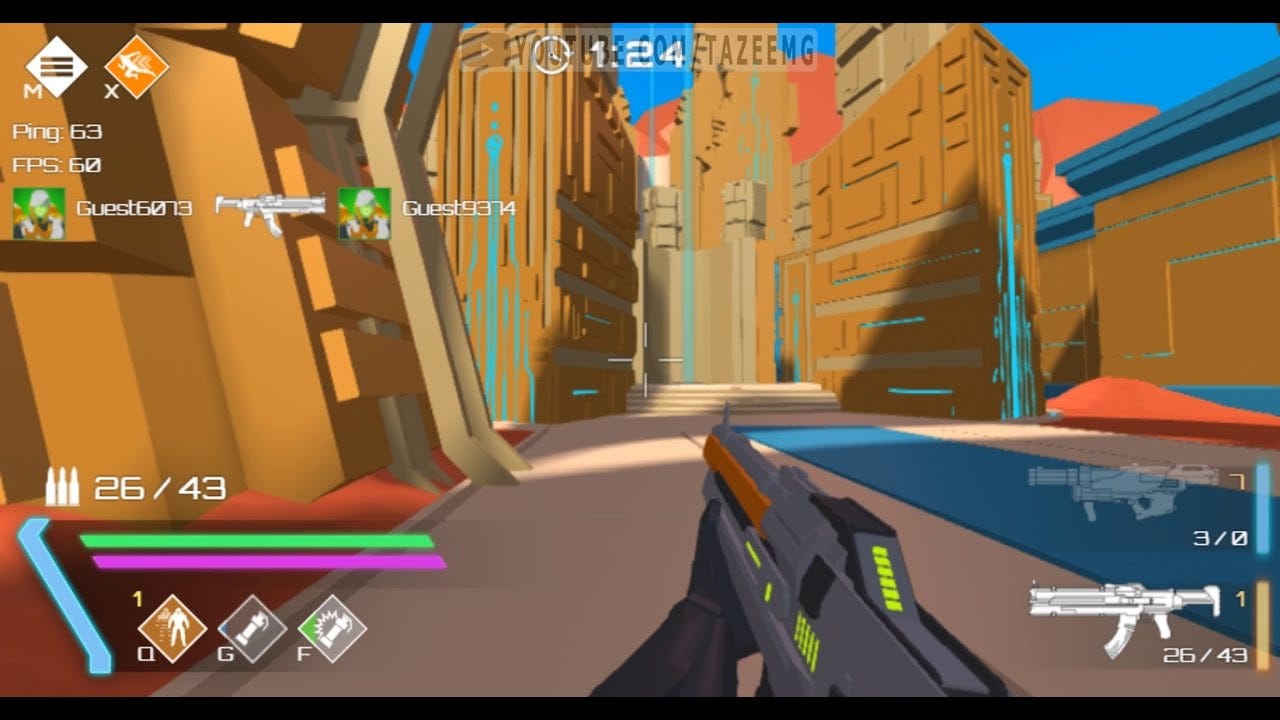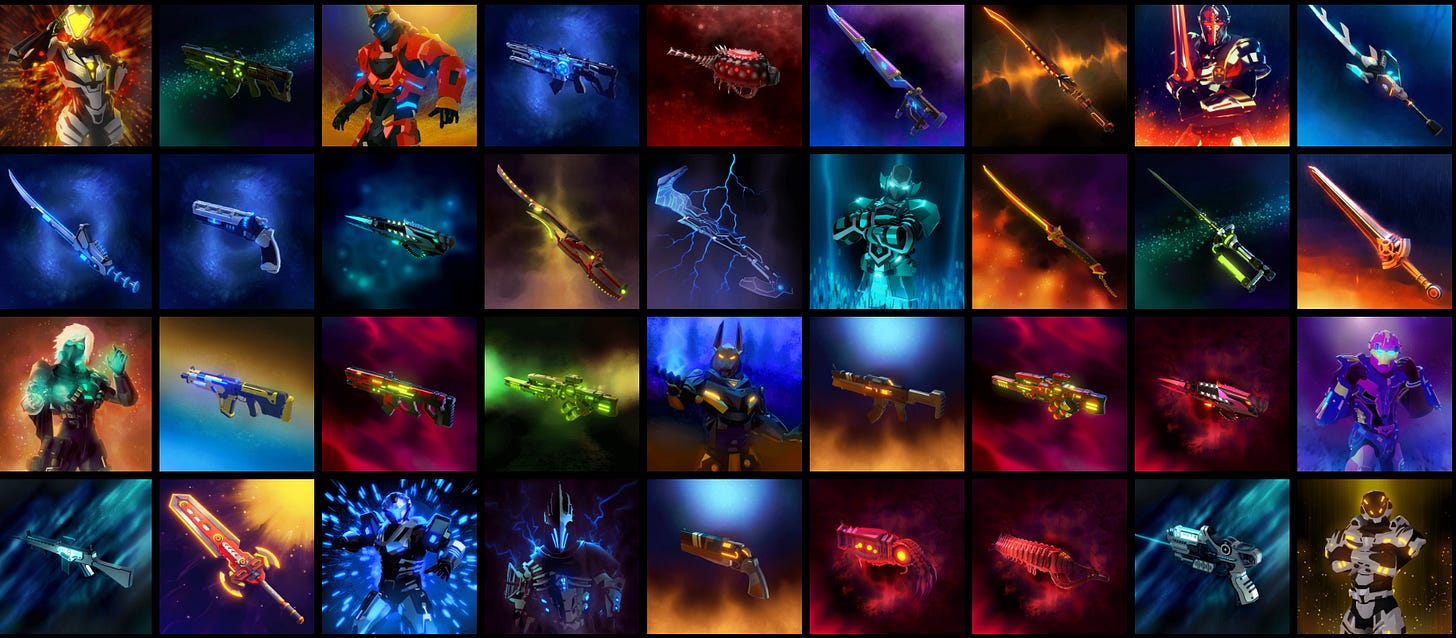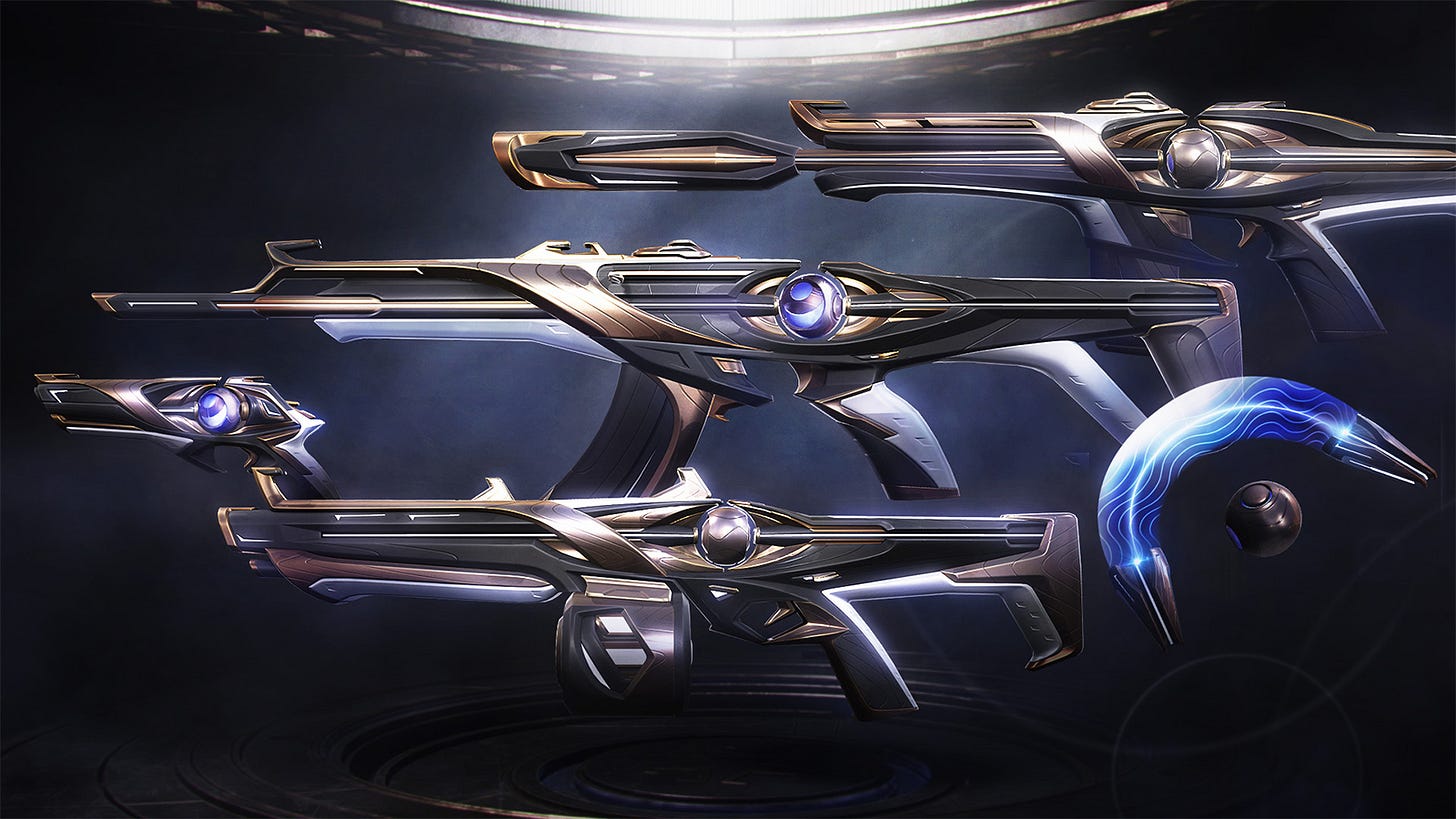What is ev.io and why is it one of the most popular web3 games?
ev.io has gained mass popularity through its fun and competitive fps gameplay, while strategically implementing web3 components in a frictionless manner.
This article is for informational purposes only and should not be considered investment, trading, or legal advice. The views and opinions expressed herein are exclusively those of the author.
TLDR:
Ev.io is a Solana-based FPS that has garnered millions of users
Players are loaded into a deathmatch and instantly compete
The game offers a plug N play, replicable, and overall enjoyable experience for players
What is on-chain and how does it add value to the user?
No hard currency, virtual off-chain currency converts to Solana
What can other web3 titles learn from ev.io’s success?
Source: ev.io
Introduction
Ev.io is one of, if not the most popular blockchain-enabled games today that you probably haven’t heard about. The Solana-based free-to-play first-person shooter (fps) is a lightweight yet fun and competitive title to pick up and casually play. The company behind ev.io is addictinggames.com, a successful UK-based publisher that has been creating highly accessible casual games for decades. Addictinggames released ev.io in January 2021 and has since garnered millions of users over the last few months.1 Ev.io has also been a hotbed for sponsors to advertise in-game.2 In this paper, our goal is to shed light on why we think this game is leading the ranks within blockchain gaming and how blockchain adds value to the user.
Gameplay
Currently, there are 7 game modes within ev.io including, battle royale, survival, and capture the flag. Players are loaded into the deathmatch game mode by default. Deathmatch is an every-player-for-themselves mode where users are tasked with eliminating opponents to increase their score. Players compete by using weapons (rifles, shotguns, and swords) and utility (frag grenades, smoke grenades, and even teleportation) to defeat their opponents. Ev.io has similar mechanics to other fps titles therefore players can naturally load and play without a steep learning curve. To learn more about the gameplay, check out this review by Ancient8.
Source: TazeeMG
So, why is it fun?
Ev.io’s weapon and utility features, in combination, allow for a quick, replicable, and overall enjoyable experience for everyone involved. Tactical fps games like Counter-Strike, Valorant, and ev.io have proven to be one of the most enjoyable yet competitive genres in gaming. Gameplay is structured, quick, linear, and strategic. Players respawn almost instantly and decide the appropriate strategy to outperform their opponents in the next round. While the games may seem simple to create in nature, these games are difficult to master. Basic features like movement, strafing, gun feel, reload speed, weapon damage, gun economy, and round bonuses are seldom mastered and if they are, it’s through many community-driven patches. If a game makes said components work in unison, like ev.io, we will probably have an attractive and addicting game on our hands. And that’s exactly what the numbers tell us.
The Players
According to third-party sites like Similarweb, ev.io has averaged over 1 million monthly visits from April to June 2022.3 Ev.io brought in over 1,300,000 visitors in April alone and has since dropped to ~815,000 users in June with the market downturn. According to these statistics, ev.io is one of the most popular blockchain games that you probably haven’t heard of. It is likely the most popular game in all of crypto, depending on the month.
While ev.io is built on Solana, it is blockchain-lite with a core focus on immersive gameplay that is simply fun. The game isn’t experiencing massive and violent drops in player base numbers compared to other blockchain-enabled games focusing on crypto-earning mechanisms first, gameplay second, or last.4 As long as a game is centered around financial incentives and some derivative of play-to-earn, the game will fail to be as recession-proof as traditional games and will continue to witness large drops in users in accordance with the market. So how is ev.io utilizing blockchain to influence its gameplay in a way that isn’t based on financialization?
So how does Blockchain affect gameplay?
In short, it doesn’t. Blockchain has zero effect on a user’s experience when it comes to direct gameplay. There are no avatar-enabled features that provide in-game utility or pay-to-win blockchain mechanics to drive up your score. The driving force of the game is its gameplay, as it should be. Ev.io is fun and casual, and it doesn’t require any sign-ups, non-fungible tokens (NFTs), tokens, or even wallet connectivity. It is a truly frictionless game that forces users to play before judging. Perhaps it’s never on the “Most Popular Web3 Games” list because the web3 element is completely optional, for good reason, especially in today’s gaming climate.
From our previous Sequel post, we discussed how web3 games should learn from successful web2 titles to provide value through blockchain technology. Web3 gaming isn’t about onboarding users from web2 but supplementing existing gameplay with value-add blockchain elements.
That being said, how is ev.io adding value to the consumer through blockchain technology?
Source: ev.io
What is on-chain?
There are three blockchain integrations with ev.io: Avatar NFTs, Weapon NFTs, and the economy.
Let’s start with the game’s NFT implementation.
Characters: Ev.io has roughly 2,400 characters or avatar NFTs that can be used within the game.5 The NFTs are strictly used for cosmetic purposes and provide no additional in-game attributes. Characters are NFT-based as an alternative option to enable open economies and allow users to freely trade their assets over time. The current floor price for a character NFT is roughly $100, an elevated price compared to web2 gaming characters.6
Weapons/Swords: Similar to characters, weapons and swords within ev.io are strictly cosmetic and don’t provide any in-game advantages. There are roughly 1,500 weapons and 2,500 swords in circulation. While the gameplay is fast-paced, players can briefly see another user’s purchased assets within the game but weapons and swords are unable to drop for others to pick up as we see in CS:GO or Valorant. A feature that weapons and swords unlock for owners is an earning mechanism. Owning one of these items allows players to earn a soft currency that can be converted into a cryptocurrency for monetary rewards. We will dive into the web3-enabled economy below.
e, virtual currency: Ev.io does not have a token. Yes, you heard that right, one of the most successful blockchain games doesn’t have a token. So how can players earn? Players earn an off-chain currency called “e” which can be converted to Solana. Currently, players need 1,000e in order to convert to Solana. Based on calculating Solana earned from a player’s match history in-game, it can take over 2,000 matches to earn $50 worth of Solana. Therefore, while the game can be labeled as play-to-earn, it’s not the main reason why people play.
Do these integrations add value to the consumer?
Characters: This integration is strictly used for cosmetic purposes. As we know from web2 gaming, microtransactions from in-game cosmetics are extremely popular and titans like Activation Blizzard make billions annually strictly from them.7 Gamers are already familiar with purchasing cosmetic assets in-game. Providing the same use case through blockchain technology is a way for developers to show gamers an alternative way to purchase assets.
Weapons/Swords: The only difference between weapons/swords vs character integrations is the play-to-earn activation element. Earning through ev.io is minimal and not a major factor for many players, allowing the buyer’s psychologically to remain similar to web2 gaming. By keeping the play to earn revenues low, there is less of a speculative element with ev.io’s assets. If players could earn a significant amount of money through playing, NFT sales would naturally increase, resulting in in-game items becoming inaccessible to users who seek affordable skins. If a game makes each skin an NFT, they will need to determine the appropriate strategy to maintain their affordability compared to web2 game cosmetics which could be $1.99 as we see in Minecraft or $80+ similar to Valorant (seen below).
Source: ONE ESports / Valorant
e, virtual currency: It highly depends on the user and why they are playing in the first place to understand if e, provides any value to the consumer. We argue that the vast majority of ev.io players, especially those coming from web2 gaming, do not place any value on earning. We can assume this since there are less than 5,000 NFTs available to the public with a relatively low floor price and over 1M monthly active users playing the game.8 If the value was set on play to earn, we would see the demand for the weapons/swords increase in price, drastically.
Final Thoughts
To conclude, we believe that ev.io, the most popular blockchain-enabled game, focuses primarily on competitive and immersive gameplay with a muted play-to-earn element. We argue the play-to-earn aspect of ev.io is a smart user acquisition tool for guilds to enter their scholars in the game but to stay for the competitive aspects of it. Come for the money, stay for the gameplay. How many other live, playable games offer this approach to their community base? Not many. Blockchain is not a reason to play the game, it’s just a new and alternative way to develop games. The more founders understand this, perhaps the better games will be received in this sector.
Ev.io’s approach is not only effective but produces more authentic communities with a desire to play great games. Games today are seeking alternatives to venture capital through selling assets today for future use and desperately trying to hold onto their promise of delivering a quality experience for their users. It’s an incorrect approach and it should be fixed sooner rather than later. Retail investors are risking their capital on a promise. This drop mechanism may work today because it caters to an extremely small audience of web3-natives; but to attract serious gamers that never touched crypto, they are already starting behind the eight ball because 1. Games are requiring them to buy assets before a proven game and 2. If the game turns out to be good, these assets will be priced beyond belief, excluding gamers.
Perhaps, the most informative and educational conclusion we can draw from ev.io is their roadmap. As mentioned, ev.io released its game in January 2021 and it was released without NFT or blockchain integrations. This changed with their NFT announcement in March 2022, over an entire year after the game was released. It wasn’t until May 18th, 2022 that players could equip their weapon and character skins in-game. The team hasn’t even conducted a land sale (although planned), and there’s no dedicated cryptocurrency. This is extraordinary because it goes against the current blockchain gaming environment of 1. NFT avatar sale 2. NFT weapon sale 3. NFT land sale, all prior to a game release. We believe this is where the web3 gaming market is headed and will be viewed more favorably among authentic communities that drive a game’s long-term success.
Until Next Time
Want to continue the conversation? Feel free to reach out to us on Twitter (Sloan & Tyler Matses), or on LinkedIn (Sloan & Tyler Matses). We would love to hear from you and chat about all things video games!
https://www.similarweb.com/website/ev.io/#traffic
https://www.globenewswire.com/en/news-release/2022/03/02/2395211/0/en/Enthusiast-Gaming-and-Hut-8-Sign-Multi-Year-Strategic-Partnership.html
https://www.similarweb.com/website/ev.io/#traffic
https://nwn.blogs.com/nwn/2022/07/axie-infinity-blockchain-game-dau-loss.html
https://magiceden.io/creators/evio
https://magiceden.io/creators/evio
https://dc.uwm.edu/etd/2494/#:~:text=Cosmetic%20microtransactions%2C%20the%20act%20of,one%20pays%20for%20virtual%20items
https://magiceden.io/marketplace/play_evio






